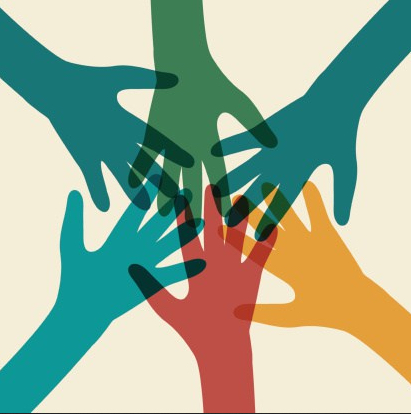E-Newsletter - March 2019
disparities corner
The Alliance Health Disparities Committee, led by Electra D. Paskett, PhD, periodically reviews the inclusion of patients involved in Alliance trials to improve best practices for outreach. In upcoming e-newsletters, the committee will share these so Alliance members can benefit from some of the great activities going on throughout our Group and incorporate those that best fit the populations we serve.
In this column, Shoshana Rosenberg, ScD, MPH, and Suzanne George, MD, share their insights on the issues some underrepresented patients in cancer clinical trials face.
addressing disparities in care and outcomes in adolescent
and young adult cancer patients


By Shoshana Rosenberg, ScD, MPH
Assistant Professor, Dana-Farber Cancer Institute and Harvard Medical School
Suzanne George, MD
Associate Professor, Dana-Farber Cancer Institute and Harvard Medical School
Group Vice-Chair, Alliance for Clinical Trials in Oncology
It is estimated that approximately 70,000 adolescents and young adults (AYAs), age 15-39, are diagnosed with cancer each year in the United States [1]. While a cancer diagnosis at any age can be life changing, there are often concerns that uniquely impact this population due to their life stage. In a recent narrative review, Barr and colleagues identified 10 issues that can impact AYAs with cancer including diagnostic delays, financial concerns, treatment adherence, physical rehabilitation, end-of-life matters, sexuality and image, fertility, and emotional support needs [2].
Issues related to different aspects of care delivery were also highlighted, including care “transitions”, such as transferring from pediatric to adult oncologic care or from active treatment to survivorship [2]. Additionally, the site of treatment and availability/ability to enroll on clinical trials were cited as a “challenge” for this population [2]. While outcomes in AYAs have improved in recent years, there remain disparities in survival improvements compared to both pediatric and adult populations [3, 4]. Historically, AYAs have been underrepresented in clinical trials and it has been suggested that this may be a contributor to the suboptimal outcomes AYAs experience relative to their younger and older counterparts [5-7].
Between 2010 and 2015, overall enrollment to cancer clinical trials in the United States decreased by about 10% annually [8]. AYA enrollment similarly decreased during this time period: in 2010, nearly 2,500 AYA patients enrolled on the NCI-sponsored trials. In 2015, approximately 1500 AYA patients had enrolled on to trials [7]. With the exception of acute lymphoblastic leukemia (ALL), all other diagnoses of cancer experienced a decrease in enrollment [7]. The complex interplay between different individual, provider, and systems-level factors likely all contribute to AYA clinical trial accrual challenges. These include limits to eligibility with regard to age, insufficient insurance coverage, and referral patterns [7]. Importantly, the re-structuring of the National Cancer Institute (NCI) cooperative groups to form the National Clinical Trials Network (NCTN) may improve accrual of AYAs to some trials by enabling better coordination between the adult cooperative groups and the Children’s Oncology Group [9].
The Alliance AYA Working Group was launched to bring together stakeholders, including both adult and pediatric oncologists, nurses, and researchers representing academic institutions and community practices, to identify and address potential barriers to AYA accrual to Alliance trials. Many Alliance trials are open to patients age 18 and older and efforts are underway to better understand these barriers in an effort to improve accrual to ongoing trials as well as inform strategies for enhancing accrual to future studies that are being planned. Ultimately, we hope these efforts result in not only reducing disparities in access to trials and optimal care delivery but translate into improvements in outcomes across the AYA age and diagnostic spectrum.
References
- https://www.cancer.gov/types/aya. Accessed February 10, 2019.
- Barr RD, Ferrari A, Ries L et al. Cancer in Adolescents and Young Adults: A Narrative Review of the Current Status and a View of the Future. JAMA Pediatr 2016; 170: 495-501.
- Bleyer A, Ferrari A, Whelan J, Barr RD. Global assessment of cancer incidence and survival in adolescents and young adults. Pediatr Blood Cancer 2017; 64.
- Liu L, Moke DJ, Tsai KY et al. A Reappraisal of Sex-Specific Cancer Survival Trends Among Adolescents and Young Adults in the United States. J Natl Cancer Inst 2018.
- Hay AE, Rae C, Fraser GA et al. Accrual of adolescents and young adults with cancer to clinical trials. Curr Oncol 2016; 23: e81-85.
- Burke ME, Albritton K, Marina N. Challenges in the recruitment of adolescents and young adults to cancer clinical trials. Cancer 2007; 110: 2385-2393.
- Fern LA, Bleyer A. Dynamics and Challenges of Clinical Trials in Adolescents and Young Adults With Cancer. Cancer J 2018; 24: 307-314.
- Bleyer A, Tai E, Siegel S. Role of clinical trials in survival progress of American adolescents and young adults with cancer-and lack thereof. Pediatr Blood Cancer 2018; 65: e27074.
- Weiss AR, Nichols CR, Freyer DR. Enhancing Adolescent and Young Adult Oncology Research Within the National Clinical Trials Network: Rationale, Progress, and Emerging Strategies. Semin Oncol 2015; 42: 740-747.
For other articles in this issue of the Alliance E-News newsletter, see below.
-
Registration Now Open - 2019 Alliance Spring Group Meeting
New Contact for Group Meeting Logistics -
Professional Responsiblity at the Forefront | Where Alliance Stands on Conflict of Interest
James Bearden, MD and Jeffery Crawford, MD
2019 Conflict of Interest (COI) Solicitation - Message From the Group Statistician Sumithra J. Mandrekar, PhD
-
Recent Alliance Protocol Activations
Alliance A231602CD Financial toxicity (blood cancers)
Alliance A221701 - Oral stomatitis
Alliance A041702 - Chronic lymphocytic leukemia
Alliance A041703 - Acute lymphoblastic leukemia -
Guest Columnists
Disparities Corner: Shoshana Rosenberg, ScD, MPH and Suzanne George, MD - Addressing Disparities in Care and Outcomes in Adolescent and Young Adult Cancer Patients
Zoneddy Dayao, MD PI, University of New Mexico Comprehensive Cancer Center - Reality of Bringing Clinical Trials to the Medically Underserved -
Announcements
Regulatory Column | NIH Single IRB (sIRB) Implementation
New Monthly IPEC Performance Updates for Data Submission Timeliness
Call for Papers to Honor and Remember Dr. Arti Hurria -
Alliance in the News
Treatment for Children with Leukemia Also Effective for Adolscents, Young Adults
Exercise & Weight Loss to Prevent Breast Cancer Recurrence
Celebrating NCORP Women in Science
New Leukemia Drug is More Effective and Easier to Use


